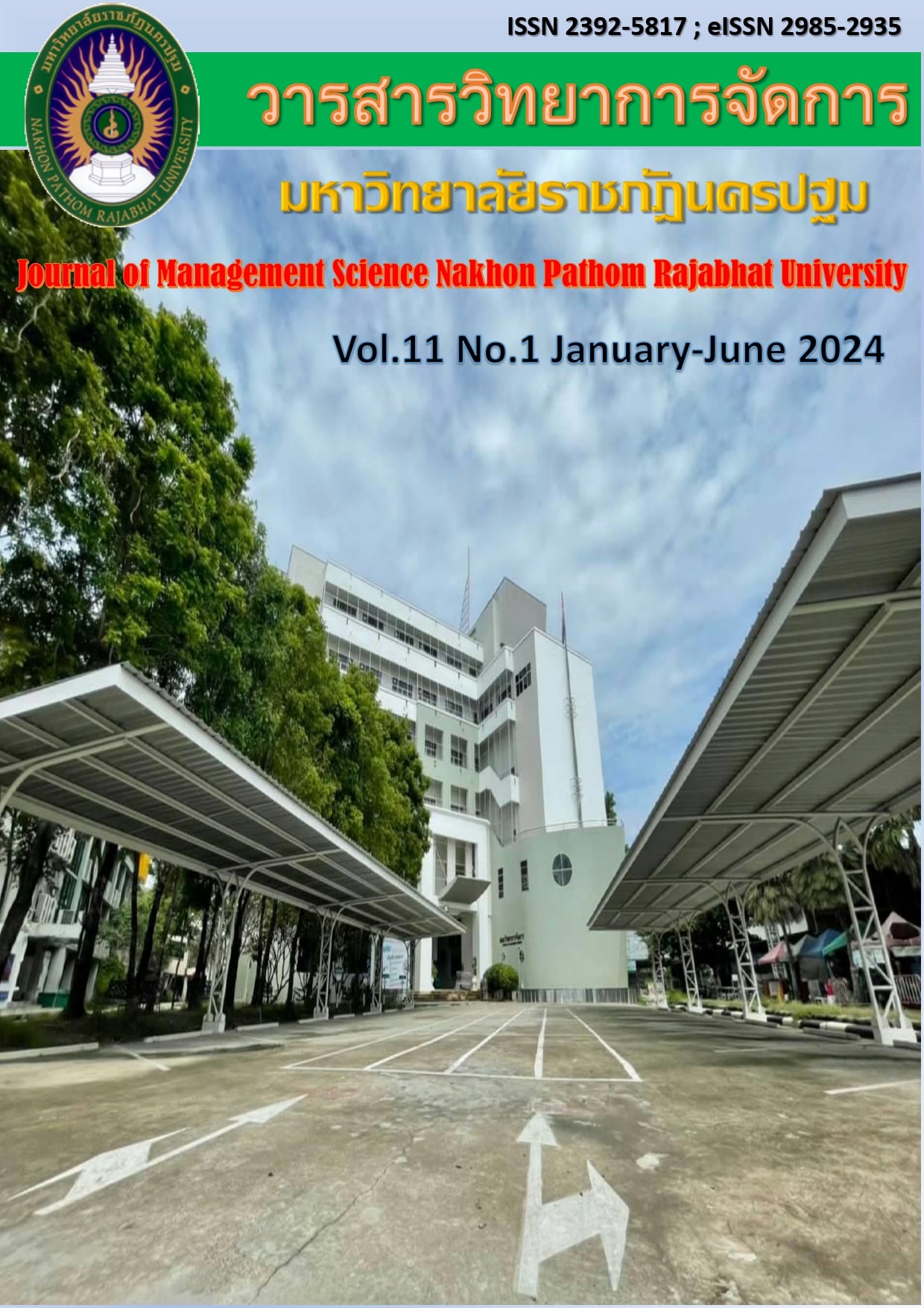The problem of social violence in social media of the youth
Main Article Content
Abstract
The results indicated that the problem of social violence in social media of the youth consists of 3 parts: (1) Perception of violence on social media, youth are exposed to a lot of news reporting that contains violent content. It will be a still image, text, audio, and video clips which are highly shared which youth are aware of the violence from the news on social media that is characterized by illegal acts, aggression, sexual violence, values and beliefs. (2) There are 5 forms of news presentation on social media that affect the feelings, thoughts, and behaviors expressed to viewers as follows: 1. Presentation through violent images and language to describe the event, 2. Video clip has been edited and presented in the form of a news scoop, 3. Posting secretly recorded clips and news anchors commenting on the news, 4. Presenting clips of real events and compiling them into news stories, and 5. Narrating events who shot the clip narrated the event in detail. (3) The impact of youth perception of news affecting violence. It has a psychological effect, making one feel afraid, suspicious, and depressed frequently until feeling that it is normal, it becomes an imitation behavior. In problem solving and prevention, youth must receive media with awareness, use discretion in receiving media, consume less media, and manage themselves to turn to other activities.
Article history: Received 15 January 2024
Revised 20 June 2024
Accepted 24 June 2024
SIMILARITY INDEX = 3.28 %
Article Details

This work is licensed under a Creative Commons Attribution-NonCommercial-NoDerivatives 4.0 International License.
The views and opinions of the article appearing in this journal are those of the author. It is not considered a view and responsibility of the editorial staff.
References
กรมกิจการเด็กและเยาวชน กระทรวงการพัฒนาสังคมและความมั่นคงของมนุษย์ .(2563). รายงานการพัฒนา
เด็กและเยาวชนประจำปี 2562. [ออนไลน์].ค้นเมื่อ 30 สิงหาคม 2563, จาก
https://www.dcy.go.th/dcy/webnew/upload/news/news_th_20200510134614_1.pdf.
จารุวัจน์ สองเมือง (2560). พฤติกรรมการบริโภคข้อมูลข่าวสารการใช้ความรุนแรงผ่านสื่อดิจิทัลของเด็ก และ
วัยรุ่นในจังหวัดชายแดนภาคใต้ที่มีต่อแนวคิดการใช้ความรุนแรงในการแก้ไขปัญหา. วารสารศาสตร์, 13(2). 74-129.
ซาอีดะห์ เกศา (2558). วัยรุ่นกับความรุนแรงเชิงวัฒนธรรมในอำเภอเมือง จังหวัดตรัง. [ออนไลน์].ค้นเมื่อ 6
มกราคม 2565 ,จาก https://core.ac.uk/download/pdf/32431907.pdf.
ตฤณห์ โพธิ์รักษา (2565) .อิทธิพลของสื่อที่มีผลต่อพฤติกรรมรุนแรงของเด็กและเยาวชน. วารสารรัฐศาสตร์
รอบรู้ และสหการ.5 (2).97-113.
ทัศนมินทร์ รัชตาธนรัชต์ และณีรนุช วงค์เจริญ (2564). สถานการณ์สื่อและอิทธิของสื่อที่ส่งผลต่อพฤติกรรมความ รุนแรงของเด็กและเยาวชน จังหวัดเชียงใหม่. วารสารวิชาการสาธารณสุข,30 (2) 99-210.
เลอพร ศุภสร (2562).การเปิดรับข่าวอาชญากรรมของเด็กและเยาวชนศึกษาเฉพาะกรณีสถานพินิจและคุ้มครองเด็กและเยาวชนจังหวัดอุบลราชธานี.วารสารวิชาการอาชญาวิทยาและนิติวิทยาศาสตร์. 6(2).150-167.
สำนักงานอัยการคดีเยาวชนและครอบครัวจังหวัดนครปฐม.(2563). สถิติคดี สำนักงานอัยการคดีเยาวชนและ
ครอบครัวจังหวัดนครปฐม.[ออนไลน์].ค้นเมื่อ 30 สิงหาคม 2563, จาก http://www.nkpt-ju.ago.go.th/index.php/2014-05-01-04-08-20.
อานุรักษ์ เขื่อนแก้ว และอัจฉรา ปัณฑรานุวงศ์ (2562) .พื้นที่การแสดงออกต่อข่าวเกี่ยวกับความรุนแรงในเฟซบุ๊กแฟนเพจประเภทข่าว.วารสารศาสตร์.13(2).74-129.
Mr Dragan Popadic and Dobrinka Kuzmanovic (2013).Utilization of Digital Technologies, Risks, and Incidence of Digital Violence among Students in Serbiaummary.[Online].
Retrieved January 5, 2022, from: https://www.unicef.org/serbia/media/7191/file/Utilisation%20of%20digital%20technologies,%20risks,%20and%20incidence%20of%20digital%20violence.pdf.
Stephen W. Littlejohn and Karen A. F. (2008) Theories of Human Communication. (9th Ed) Canada: Wadsworth Publishing.
World Health Organization. (2002). World Report on Violence and Health. [Online]. Retrieved
February 15, 2022, from: https://www.who.int/publications/i/item/9241545615.


